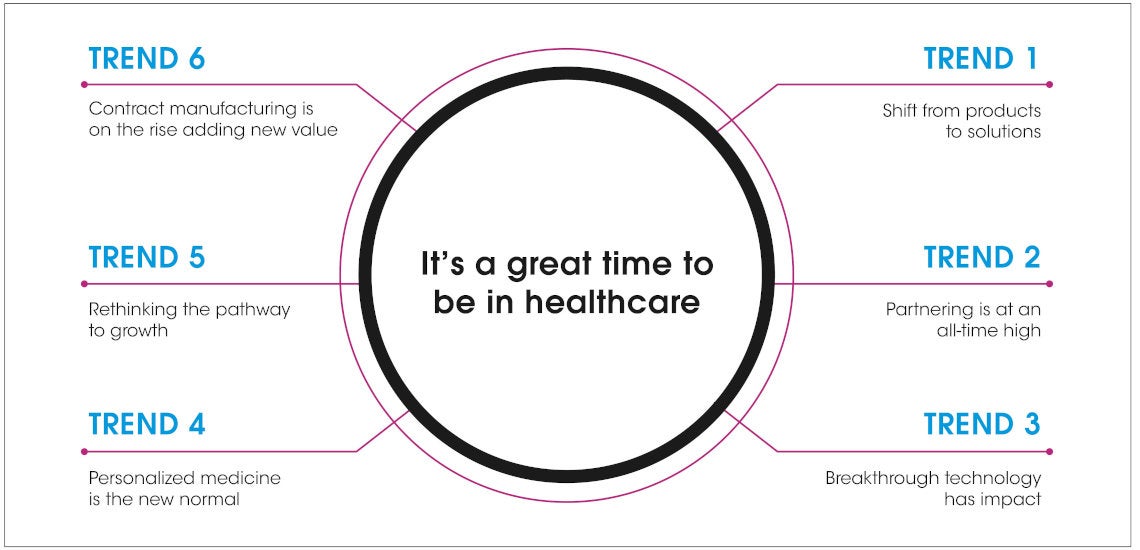
We gained valuable insight into the future of the industry at the 38th annual J.P. Morgan Healthcare Conference. The highlights include one common goal — a renewed focus on the patient. Here are six key takeaways from the event.
Six trends to know for the future of healthcare

1. Shift from products to solutions
The days of successfully growing market share from a single product are over. Patient solutions that address pre-, peri-, and post-acute event care are helping to expand the portfolio of offerings for medical device manufacturers and pharmaceutical companies.
2. Partnering is at an all-time high
The recognition that expertise in diagnostics or therapeutic mechanisms and technologies is at the core of many great companies, but it is no longer a standalone guarantee of success. Technology partners, software partners, institutional partners, and joint ventures are all rising to the surface as the best and fastest path forward to create total solutions.
3. Breakthrough technology has an impact
The FDA’s Breakthrough Technology designation is having a big impact on speed to market and patient access to novel therapies. The program first emerged in pharma in 2012 and later in 2017 for medical devices. It provides an effective path to accelerate time to market and brings therapies to patients whose lives depend on breakthrough treatments much faster. In 2019 there were 156 Breakthrough Therapy designation approvals in pharma, and in 2018, there were 97 in devices.
4. Personalized medicine is the new normal
The patient experience plays a growing role in the adoption of a therapy. The digital native generation, (those who have grown up with digital technology rather than converted to it), have different expectations of the healthcare experience. Today, patients expect seamless and convenient interactions, digital healthcare delivery interfaces, ease of access to information and interoperability — all at their fingertips and customized to them. Add to this personalized medicine for diseases like cancer and it’s easy to see how the therapy and its delivery will become a completely personalized experience.
5. Rethinking the pathway to growth
Both large- and small-scale acquisition by OEMs continues, sometimes in non-core businesses to create the “total solution.” Optimized and efficient integration was discussed by many as the real determinant of growth. Many companies presented growth strategies that include outsourcing manufacturing of the non-core to produce an optimized asset utilization model.
6. Contract manufacturing is on the rise
The medical device market is expected to grow by 5-6 percent while the growth of the contract manufacturing market is projected at 10.2 percent. Why the delta? One of the growth enablers in the device and equipment industry is manufacturing network optimization. It can mean moving a full product or product family to a reputable and high performing contract manufacturing organization.
Fast and efficient scaling of production, as well as optimizing vertical integration, are valuable elements to seek from a contract manufacturer and among the keys to optimizing EBITDA growth and at a rate faster than revenue growth.
It’s a great time to be in healthcare
With hundreds of companies presenting their results and their plans, there is one clear and undeniable message — it’s a great time to be in healthcare. The inspiring new ways of working together, new partnerships and improved treatment delivery offer valuable new options for patients.
We can help you move forward

We partner with medical device and pharmaceutical companies alike to help innovate, design, and build value creating products — from highly complex to very simple. Our global FDA-registered and ISO 13485 compliant facilities have experience in all classes of products and we help provide opportunity for business growth in today’s changing world of healthcare.



